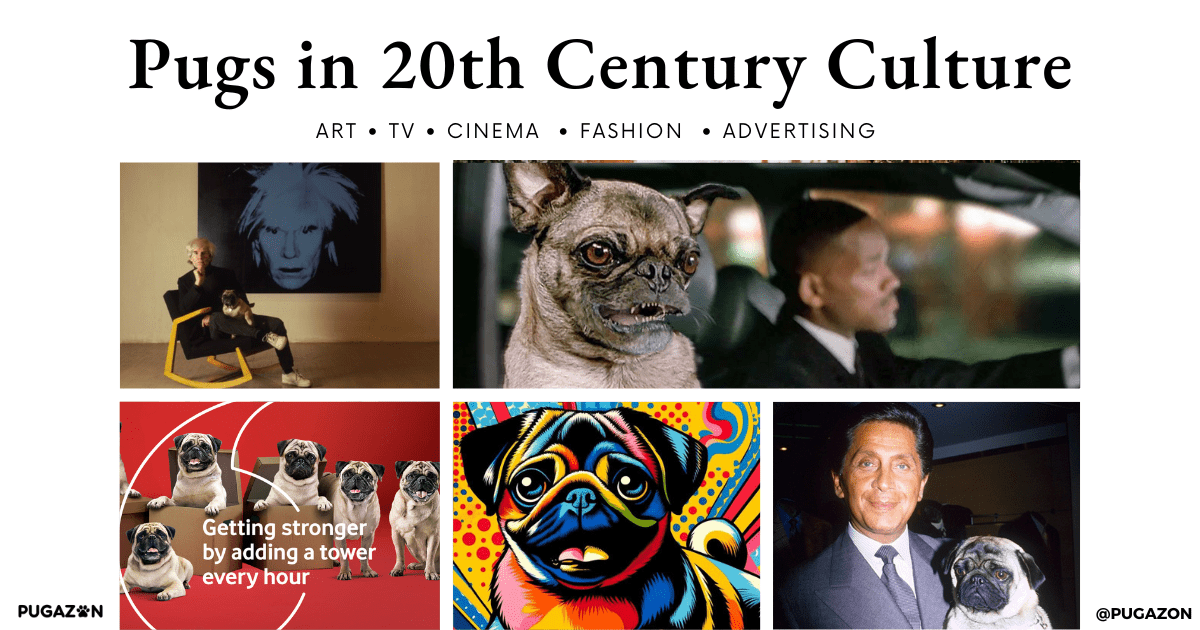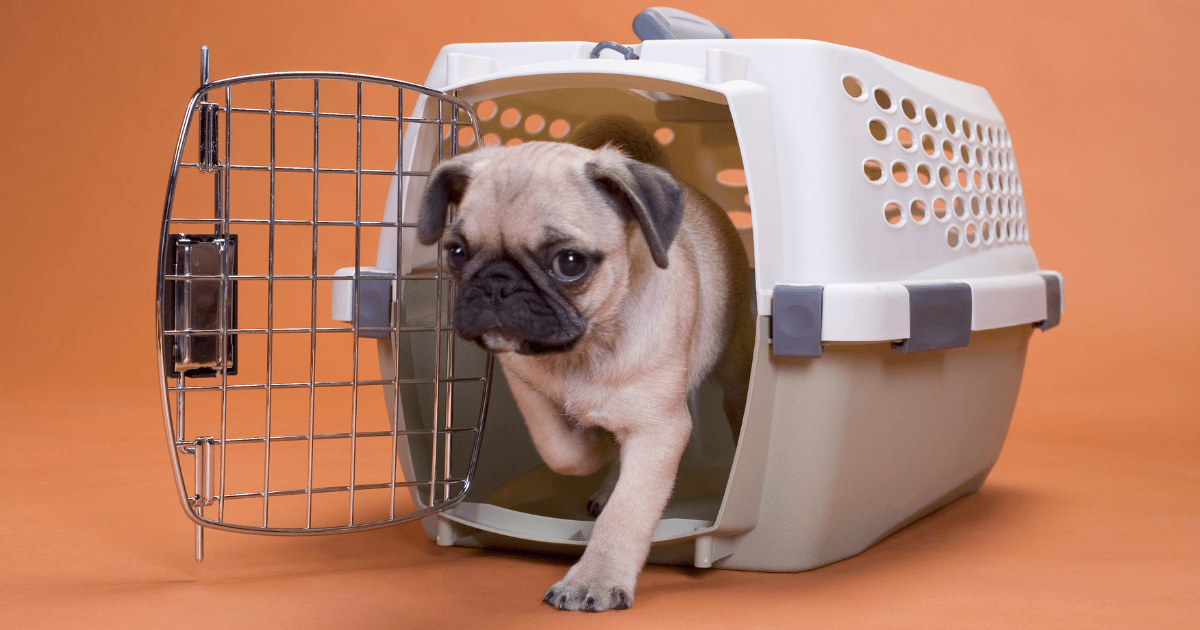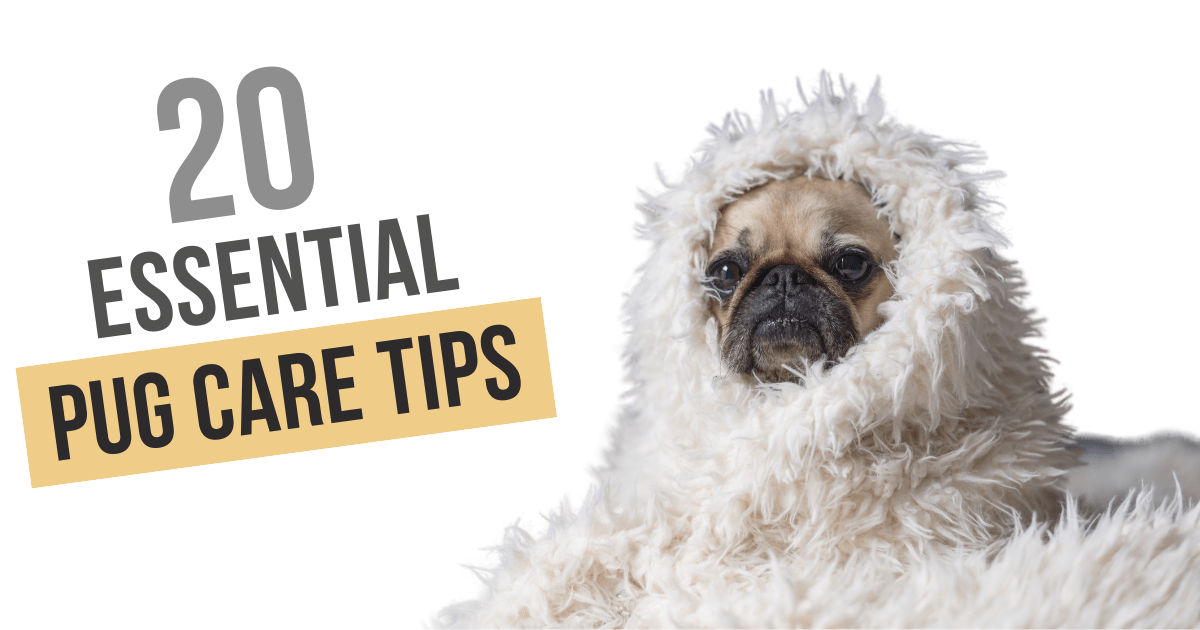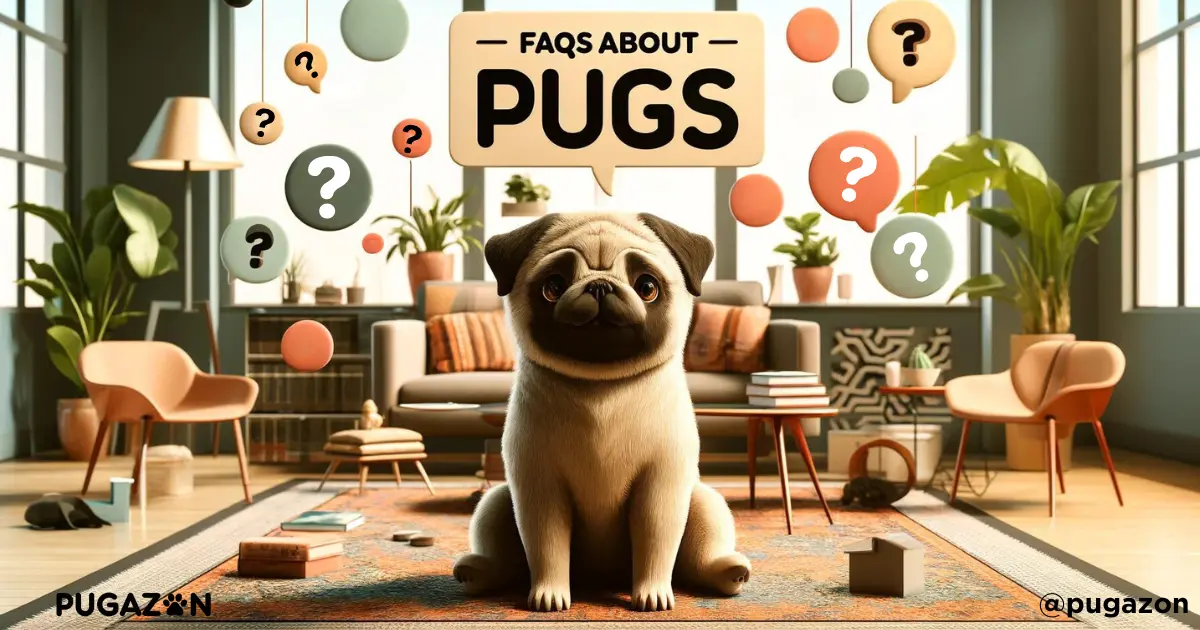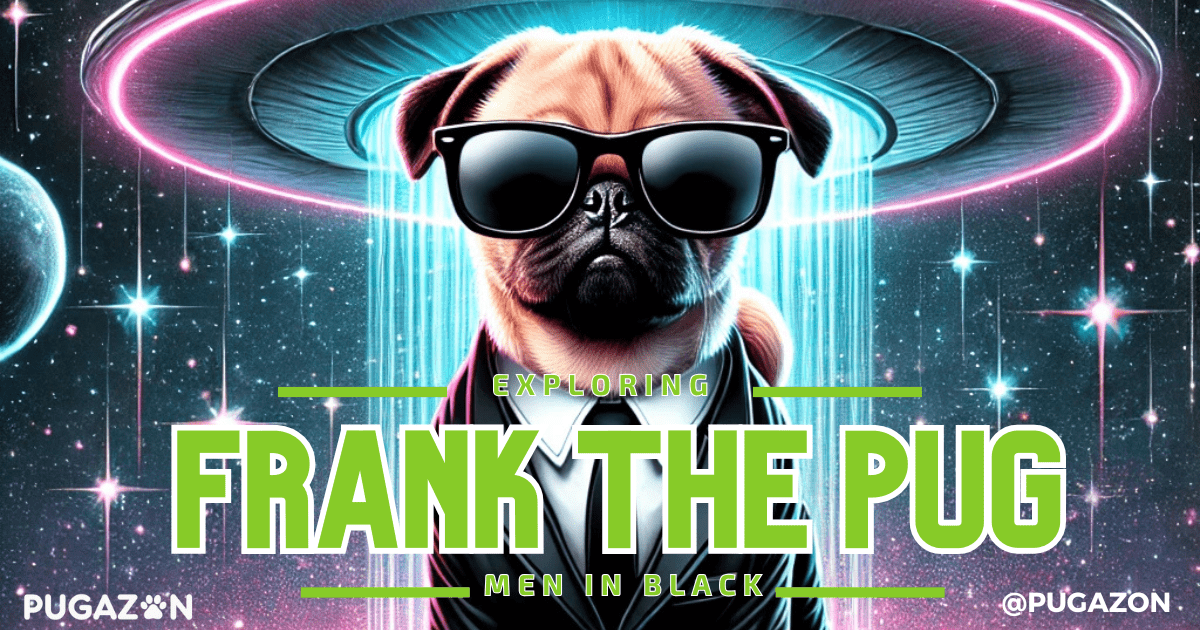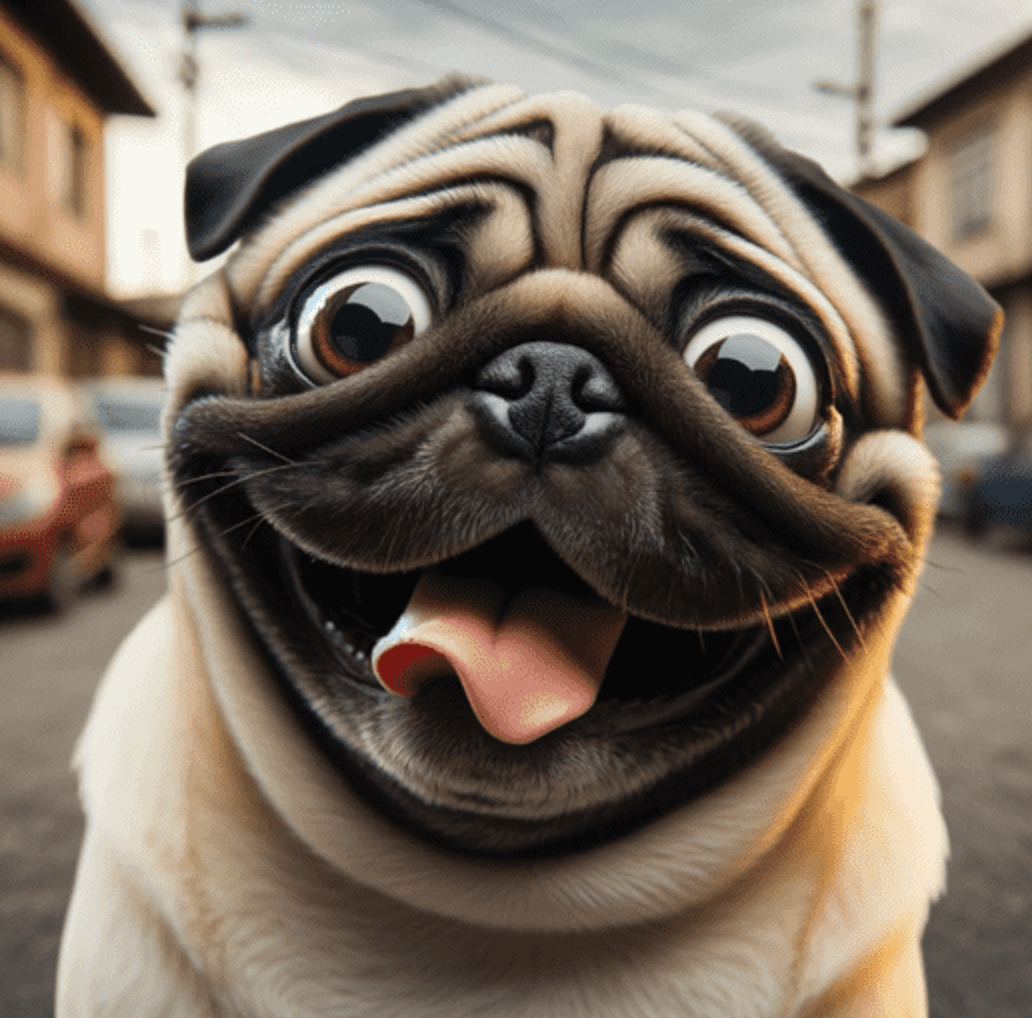Pugs’ Cultural Impact in the 20th Century
Pugs in 20th-century culture became iconic symbols of charm, elegance, and loyalty, thanks to their distinctive appearance and longstanding relationship with royalty and influential figures. Originally bred in China as companions to emperors, pugs made their way into European courts during the 16th century. However, their rise to cultural prominence reached new heights in the 20th century, when they became widely embraced by artists, fashion designers, filmmakers, and celebrities.
Throughout the 20th century, pugs played a significant role in various forms of visual arts, from paintings and sculptures to illustrations. Their distinctive look—characterized by their flat face, large eyes, and wrinkled forehead—made them a favorite subject for many artists. Their portrayal in artworks symbolized not only loyalty and affection but also sophistication and aristocracy, cementing their status as beloved companions of both the elite and the everyday pet lover.
In addition to their presence in the visual arts, pugs were also celebrated in the world of fashion. Iconic designers like Valentino famously adored the breed, showcasing their pugs alongside high fashion collections and creating a lasting connection between pugs and luxury branding. The pugs’ natural elegance, paired with their unique physical features, made them a staple in haute couture and a symbol of refined taste.
Pugs in cinema and television became another key facet of their cultural influence in the 20th century. Their charming and often comedic demeanor lent itself perfectly to starring roles in major films and advertising campaigns. For instance, the pug “Frank” from Men in Black became one of the most recognizable dogs in Hollywood, further solidifying the breed’s status as cultural icons.
This guide delves deep into the many ways pugs shaped 20th-century culture, exploring their roles in the arts, fashion, film, advertising, and even their relationships with high-profile celebrities. By understanding the profound impact of pugs in these various spheres, we can appreciate not only their enduring popularity but also their lasting influence on modern society’s perception of pets. Whether as artistic muses, fashion icons, or beloved film stars, pugs have left an indelible mark on the cultural landscape of the 20th century.
Pugs in Visual Arts: From Hogarth to 20th Century Icons
Pugs as Artistic Muses
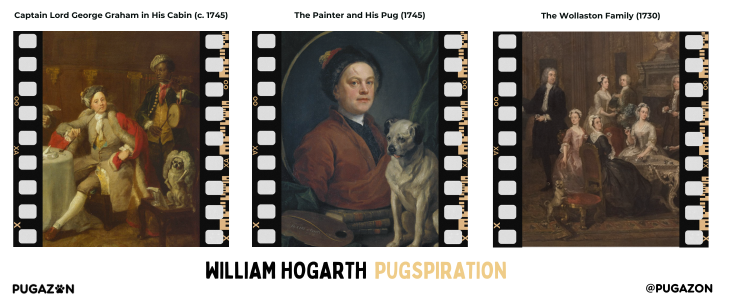
William Hogarth’s self-portrait The Painter and His Pug (1745), featuring his beloved pug Trump, is one of the most iconic artistic depictions of the breed. While Hogarth’s work belongs to the 18th century, it set the stage for how pugs would be perceived in art and society for centuries to come. Trump, with his bold and steadfast demeanor, symbolized loyalty and companionship—qualities that aligned with Hogarth’s own rebellious and satirical style.
Hogarth’s works had a lasting impact on how pugs were seen in artistic circles, even influencing their portrayal in 20th-century art and culture. While not directly tied to any specific artistic movement in the 20th century, the image of the pug as a loyal, noble companion persisted, contributing to the breed’s continued popularity in art and society.
William Hogarth’s Trump: A Pug That Endured Through the Ages
Throughout history, pugs have been celebrated for their distinctive appearance and charming personalities, which have made them subjects of admiration in various art forms. From their role as loyal companions to their status as symbols of affluence and sophistication, pugs have inspired artists across different eras. While their depiction in visual art dates back to the 18th century, pugs continued to influence decorative arts, luxury goods, and pop culture in the 20th century, reflecting their evolving role in society.
Pugs in Decorative Art: A Symbol of Luxury in the 20th Century
Though Andy Warhol’s pop art did not feature pugs explicitly, his close connection to the breed was well-documented. Warhol was frequently seen in the company of pugs owned by his friend, Pat Hackett, a fellow artist and pug enthusiast. These pugs became regular fixtures at Warhol’s Factory studio in New York City during the 1970s and 1980s, where they added a quirky, playful element to the artist’s otherwise avant-garde and experimental environment.
Warhol’s public appearances with pugs, as well as his affinity for the breed, contributed to the pug’s image as a fashionable and eccentric pet, symbolizing affluence and individuality. Warhol’s association with pugs reflected the breed’s transition from aristocratic circles to the modern art world, where they became symbols of both luxury and creative nonconformity.
Andy Warhol’s Affinity for Pugs: A Cultural Connection
In the early to mid-20th century, pugs became popular subjects in decorative arts, particularly in luxury goods such as porcelain and ceramic figurines. While there is no direct evidence linking their prominence specifically to Art Nouveau or Art Deco movements, the pug’s compact form and dignified posture made them ideal subjects for artists and designers crafting home décor items for affluent clients.
Pug-themed items, such as statues, jewelry, and decorative porcelain, were considered fashionable and elegant additions to the homes of the wealthy, reinforcing the breed’s association with luxury and taste. The pug’s status as a symbol of affluence persisted throughout the 20th century, with their likeness frequently appearing in high-end decorative pieces. This reflected a broader trend in which pugs were seen not only as loyal companions but also as markers of social status.
The enduring appeal of pugs in decorative arts, from the 19th century into the mid-20th century, showcases their versatility as both beloved pets and aesthetic symbols of elegance and sophistication. Their portrayal in art echoed their role in society as a breed favored by aristocrats, celebrities, and collectors alike.
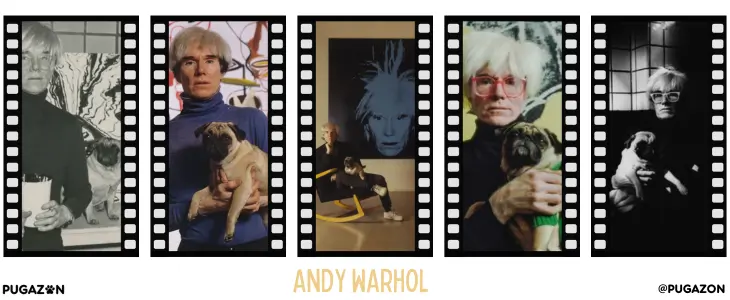
Francisco Goya: Pugs in Noble Portraits
While Francisco Goya is most well-known for his depictions of Spanish nobility, pugs also made their way into some of his works. Notably, in The Marquesa de Pontejos (1786), a pug sits elegantly beside the Marquesa, symbolizing both loyalty and wealth. Though Goya’s works are from the late 18th century, they contributed to the cultural perception of pugs as symbols of status and refinement.
The influence of Goya’s depictions of pugs extended into the 20th century, where pugs continued to be favored by the elite and celebrated in visual culture as markers of social prestige. Pugs’ role in noble portraits like Goya’s helped to cement their image as desirable companions for those in positions of power and influence.
Pugs in Visual Arts – A Timeless Symbol of Elegance
From William Hogarth’s Trump to Francisco Goya’s noble portraits, and later to Andy Warhol’s social circles, pugs have played a consistent role in the art world as symbols of loyalty, sophistication, and individuality. Their depiction in decorative arts and their presence in the lives of artists like Warhol solidified the breed’s status as a cultural icon throughout the 20th century.
Whether featured in luxury home décor or as companions to modern artists, pugs have left an indelible mark on the visual arts, proving their timeless appeal and enduring cultural significance.
Pugs in TV Campaigns: From Vodafone to Global Fame
Pugs in Advertising and TV Campaigns
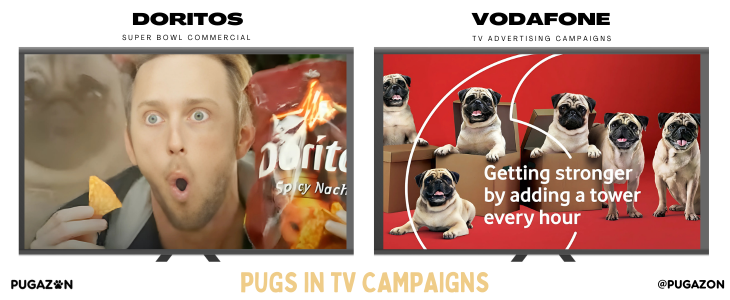
One of the most famous pug-centric ad campaigns emerged from Vodafone. The Vodafone pug became a household name in India, featured in several commercials promoting the brand’s mobile services. The ads portrayed the pug as a faithful companion, always by its owner’s side, symbolizing Vodafone’s message of connectivity, reliability, and loyalty. These campaigns, which ran in the late 2000s, made an indelible impact, with the pug becoming synonymous with Vodafone’s branding and even leading to increased demand for pugs as pets in the region.
The campaign’s success can be attributed to the relatable bond between the pug and its owner, capturing the essence of trust and companionship. The clever use of the pug as a metaphor for Vodafone’s network reliability resonated with viewers, driving both emotional engagement and brand loyalty. The pug’s starring role in these commercials set a new standard for how animals, particularly pugs, could be used to create a lasting emotional connection in advertising.
Vodafone's Famous Pug Campaigns
The pug’s distinct appearance—compact, wrinkled, and undeniably cute—has made it a favorite in the world of advertising. Over the years, pugs have been featured in a variety of TV commercials, where their quirky expressions and endearing personalities have charmed audiences globally. From Vodafone’s iconic pug commercials to the widely celebrated Doritos ad, the breed has gained widespread recognition, cementing its place as a symbol of warmth, humor, and reliability in the advertising world.
Doritos’ Super Bowl Ad
Beyond Vodafone and Doritos, pugs have featured in numerous other campaigns across various industries. Their expressive faces, often full of character and charm, make them perfect mascots for brands looking to capture attention and evoke positive emotions. Pugs have been used to market everything from pet food to household products, and their versatility as both comedic and affectionate figures makes them adaptable to different advertising styles.
The use of pugs in advertising is a strategic decision—brands recognize that animals, particularly breeds like pugs, can create a sense of familiarity and comfort. Pugs, with their adorable yet slightly comedic expressions, have become a symbol of trustworthiness, making them an ideal fit for family-friendly and pet-related products.
Pugs as Mascots: Widespread Popularity in Advertising
The 2011 Doritos Super Bowl ad featuring a pug is another perfect example of how this breed has become a pop culture sensation in advertising. The ad, titled “Pug Attack,” quickly became one of the most talked-about commercials from that year’s Super Bowl. In the commercial, a pug charges towards a glass door to get to a bag of Doritos held by a man on the other side. The anticipation builds as the pug runs in slow motion, only to hilariously crash through the door and snatch the Doritos.
The Doritos pug ad became an instant hit, not only because of the humor but also because it played perfectly into the lovable determination that pugs are known for. The commercial ranked high in post-Super Bowl polls and garnered millions of views online, becoming a viral sensation that solidified the pug’s status as an advertising icon. It also cemented pugs as symbols of both humor and determination, traits that advertisers continue to leverage to this day.
The Rise of Pug Memes in Digital Advertising
As digital advertising took off in the 2010s, pugs found a new platform for fame—memes and viral content. The pug’s distinctive appearance has made it a favorite in meme culture, where its expressive face is often used to convey a range of emotions, from confusion to joy. Brands quickly took notice of this, incorporating pug memes into their digital marketing strategies to appeal to younger, internet-savvy audiences.
One notable example is how pugs became central figures in social media campaigns, where their presence in GIFs, short videos, and humorous posts helped brands go viral. The pug’s image became a tool for engagement, driving likes, shares, and comments as people responded to the dog’s adorable and relatable expressions.
Global Impact of Pugs in Advertising
The influence of pugs in TV and digital advertising is not limited to one region. From Vodafone’s Indian campaigns to global ads in Europe and North America, pugs have charmed audiences worldwide. Brands recognize that the pug’s universal appeal transcends cultural boundaries—its lovable nature, combined with its goofy yet charming looks, resonates with people from all walks of life.
Pugs have featured in commercials for insurance companies, technology brands, and even fashion, where their presence adds a touch of humor and accessibility. In each instance, the pug’s role is to create an emotional connection, making the viewer feel a sense of warmth and trust in the product being advertised.
Pugs as Advertising Icons
Pugs have become icons in the world of TV and digital advertising, with their enduring appeal helping to sell products and build brand loyalty. Whether it’s Vodafone’s faithful pug mascot, Doritos’ viral Super Bowl ad, or the countless pug-themed social media campaigns, the breed’s ability to engage audiences is undeniable. As advertising continues to evolve, pugs are likely to remain a favorite among marketers for their ability to convey messages of reliability, trust, and endearing charm.
Always Stay Up to Date
Pugs in Fashion: Valentino’s Couture and High Fashion Symbolism

When discussing pugs in fashion, one name stands out—Valentino Garavani, the Italian fashion designer known for his luxurious and elegant designs. Valentino’s love for pugs went beyond mere companionship; they became an essential part of his personal brand and lifestyle. His fondness for the breed was so profound that his pugs were often photographed alongside him, becoming symbols of both his personal elegance and his couture empire.
Valentino’s devotion to his pugs became well-known in the fashion industry, where the dogs often accompanied him to fashion shows and public appearances. Their regal, poised demeanor perfectly complemented Valentino’s high-fashion aesthetic. The designer’s pugs were not just pets—they embodied the grace, luxury, and sophistication that his brand stood for. He even named a collection after his dearest Pug “Oliver” which has embedded pugs connection to fashion forever. As pugs became more prevalent in fashion magazines and ad campaigns, their association with couture and high-end fashion solidified.
The Emergence of Pugs in 20th-Century Pet Fashion
The latter half of the 20th century witnessed a rise in luxury pet fashion, with pugs becoming popular figures in this emerging market. As pet owners sought stylish accessories for their companions, pugs naturally fit the role of stylish models. Brands began introducing pug-specific items, from designer collars to custom coats, which catered to the breed’s stout build and distinctive appearance.
Luxury fashion brands recognized the demand for high-end pet accessories, which paralleled the evolving image of pugs as refined companions. The breed’s playful yet dignified demeanor made them a perfect symbol for this new market segment, aligning them with luxury living even beyond human fashion. Although pugs were not frequently featured in mainstream advertising campaigns for major fashion houses, their involvement in pet fashion products signified their role as symbols of opulence and taste.
Pugs and Couture: From Royal Companions to Fashion Muses
The story of pugs in fashion is not just about their charm—it’s about their enduring presence as symbols of elegance and status. Historically associated with royalty and nobility, pugs have naturally transitioned into the world of fashion as companions that embody refinement and sophistication. Their compact, poised demeanor and distinctive wrinkles align well with the ideals of haute couture, making them an ideal muse for luxury lifestyles.
Throughout the 20th century, pugs transcended their role as mere companions, becoming symbols of opulence and elegance across various cultural landscapes. Seen at exclusive gatherings, featured in distinguished art, and captured in iconic photography, pugs’ dignified yet whimsical presence resonated with luxury brands and high society alike. Believe it or not, pugs have even walked the runways with models at various fashion shows across the globe. The pugs association with renowned figures like Valentino Garavani, coupled with appearances at elite events and shows has bolstered their reputation as stylish and sophisticated icons.
In modern fashion, pugs continue to inspire bespoke pet collections that include designer collars, tailored coats, and chic carriers. This evolution reflects not only the rise of luxury pet fashion but also the breed’s lasting ties to noble lifestyles. With their regal bearing and endearing quirks, pugs remain timeless fashion muses, embodying a perfect blend of sophistication and playful charm for those who appreciate style with a hint of whimsy.
Pug Fashion Icons in Popular Culture
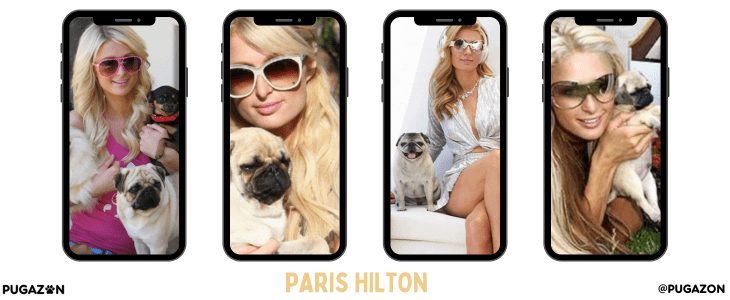
Pugs’ influence in the fashion world extends beyond runway shows and designer labels. Celebrities like Paris Hilton, with her penchant for luxury and small dogs, helped elevate the breed’s profile in the early 2000s. Her love for pugs, as well as other small dog breeds, was well-documented in the media, where she frequently dressed her pets in designer outfits.
This trend set off a wave of interest in dressing pugs in fashionable attire, further solidifying the breed’s association with high fashion. The pug’s ability to wear a range of accessories—whether a rhinestone collar or a custom-made sweater—made them an ideal pet for fashion-conscious celebrities, continuing their legacy as icons of style well into the 21st century.
Last update on 2025-02-11 / * Affiliate links / Image source: Amazon Product Advertising API
Pugs in Cinema: Frank in Men in Black and Iconic Film Roles
Pugs have a long history of appearing on the big screen, often cast for their adorable yet distinctive looks and comedic personalities. Over the years, these lovable dogs have stolen the spotlight in numerous films, with one of the most iconic pug roles being “Frank the Pug” in the Men in Black series.
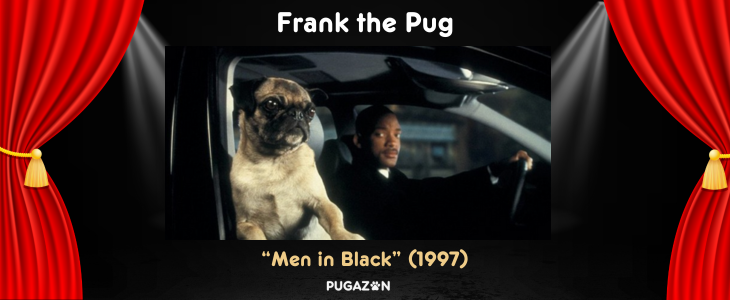
Frank the Pug: Hollywood’s Breakout Star
Frank the Pug first appeared in Men in Black (1997) and immediately became a fan favorite. Portrayed as a talking alien disguised as a dog, Frank’s character brought humor and wit to the film’s plot. Played by a real pug named Mushu, Frank’s scenes are memorable for his sarcastic dialogue and his role as a sidekick to Will Smith and Tommy Lee Jones.
Frank’s popularity was such that he returned in Men in Black II (2002), where he played an even more significant role. His witty banter and comedic timing helped make him one of the most recognizable dogs in cinematic history. Frank’s character epitomized the pug’s ability to be both adorable and full of personality, traits that endeared him to audiences worldwide.
Other Famous Pug Movie Roles
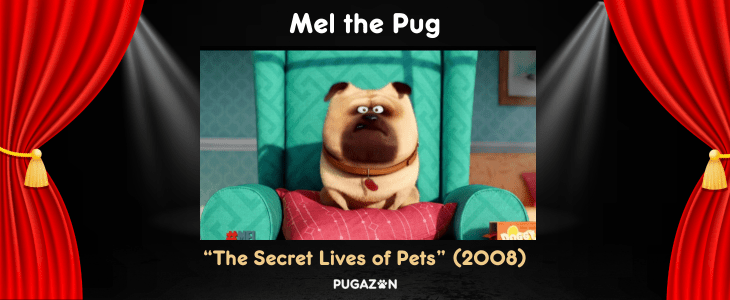
While Frank the Pug is arguably the most famous pug in cinema, the breed has appeared in numerous other films over the years. In the 2006 movie The Secret Life of Pets, Mel the Pug played a central role, showcasing the breed’s playful nature in an animated format. Mel’s goofy, good-hearted character captured the essence of pugs’ friendly and loyal personalities, appealing to children and families.
Pugs have also made cameo appearances in films such as Marie Antoinette (2006), where they added a touch of historical accuracy to the lavish settings of the French court. Pugs’ popularity in film reflects their versatile appeal, able to charm audiences in both modern comedies and period dramas.
Pugs’ Enduring Legacy in Cinema
The success of pugs in movies is not just about their cute appearance—it’s also about their ability to express emotion and humor in a way that resonates with audiences. Whether they’re stealing scenes in major blockbusters like Men in Black or providing comic relief in animated films, pugs have become a beloved fixture in Hollywood.
Pugs’ legacy in cinema is a testament to their unique charm and personality, which filmmakers continue to use to captivate audiences. Their roles in films help reinforce the breed’s status as both entertaining and culturally significant pets.
Pugs and Celebrities: A-List Owners and Their Pug Companions
Pugs have always had a connection with royalty and high society, but their popularity skyrocketed in the 20th century as celebrities embraced the breed. Pugs’ distinctive appearance, combined with their loving personalities, made them the perfect companions for stars seeking an elegant, yet playful, pet. From iconic actors to fashion moguls, pugs have been associated with some of the world’s most famous individuals, further cementing their status as cultural icons.
Valentino Garavani: A Fashion Legend’s Pug Love Affair
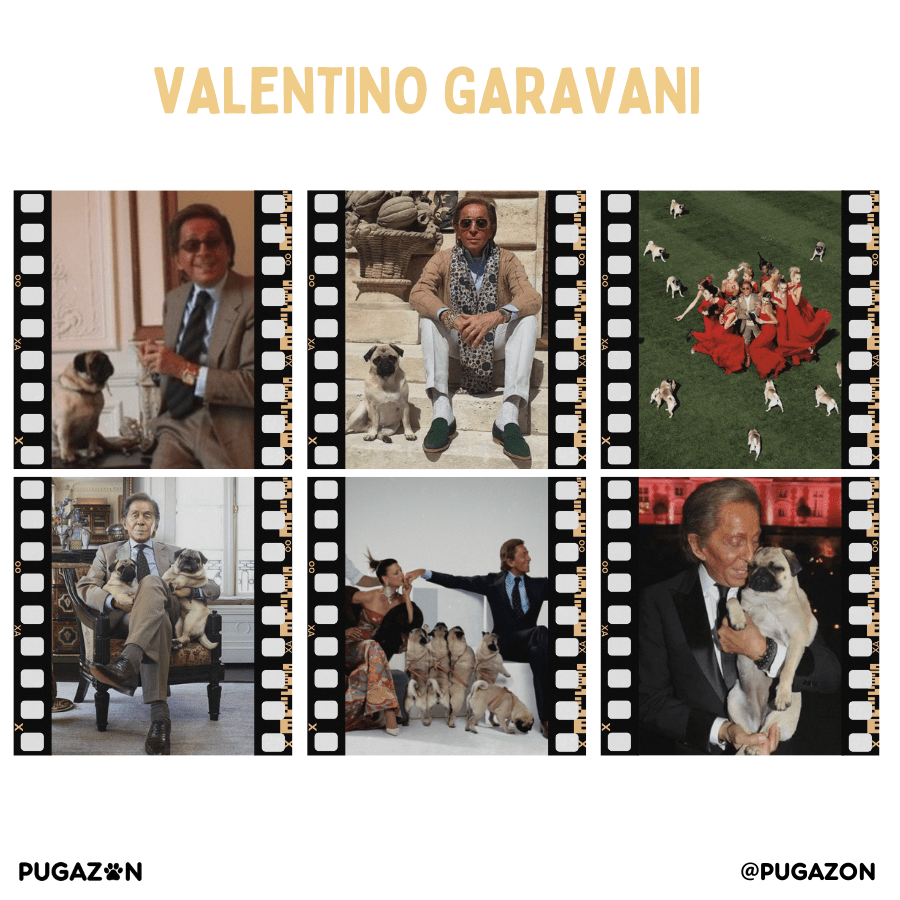
Italian fashion designer Valentino Garavani is one of the most notable pug owners in the 20th century. His adoration for pugs is well-documented, and he frequently appeared in public with his beloved pets. Valentino’s pugs were so central to his life that they often traveled with him, attending fashion shows and lounging in the background during interviews and public events. His connection to pugs wasn’t just personal; it became part of his brand’s image—elegance, refinement, and a touch of playfulness.
Valentino’s affinity for pugs added to their cultural status, especially within the fashion world. The luxury associated with the Valentino brand naturally extended to his pets, reinforcing the notion that pugs were the ultimate companions for the elite. Their regal demeanor complemented the high-fashion aesthetic that Valentino so famously cultivated.
Modern-Day Celebrities and Their Pugs
Pugs remain beloved companions for many celebrities in the 21st century, where their iconic appearance and affectionate nature fit perfectly into the glamorous lifestyles of the rich and famous. Among the most well-known pug enthusiasts is actress Jessica Alba, who has often been seen with her pug at various events and on social media. Her love for pugs reflects the breed’s enduring appeal, particularly among celebrities who value their loyal and charming personalities.
Fashion icon and socialite Paris Hilton is another prominent pug owner, frequently photographed with her pug by her side. Hilton’s public appearances with her pug helped solidify the breed’s association with luxury and high society, making pugs synonymous with both style and affection.
Comedian and talk show host Jonathan Ross has also shown a strong affinity for pugs, often mentioning his pug in interviews and sharing pictures on social media. His connection with pugs highlights the breed’s versatility, beloved by not only glamorous celebrities but also those in the world of comedy and entertainment.
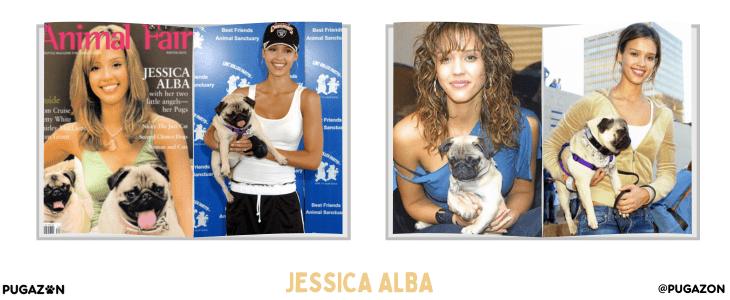
Pugs as Celebrity Status Symbols
In celebrity culture, pugs offer a unique blend of style and substance. Their small size and distinctive look make them perfect companions for stars who appreciate both fashion and loyalty in a pet. This association with prominent figures like Jessica Alba, Paris Hilton, and Jonathan Ross has helped pugs maintain their place as iconic companions. Pugs provide these celebrities with not only companionship but also a sense of comfort amid their fast-paced, high-profile lives.
The continued popularity of pugs among A-list owners is a testament to the breed’s charm and enduring appeal in both the public and private lives of stars. Whether gracing red carpets or relaxing in lavish homes, pugs have cemented their status as the ultimate celebrity pet.
Pugs in Pop Culture: TV, Magazines, and Advertising Fame
As the 20th century progressed, pugs solidified their place in pop culture, appearing in everything from TV shows to magazine covers and global advertising campaigns. Their distinctive looks and irresistible charm made them the perfect fit for various media platforms, capturing the hearts of audiences worldwide.
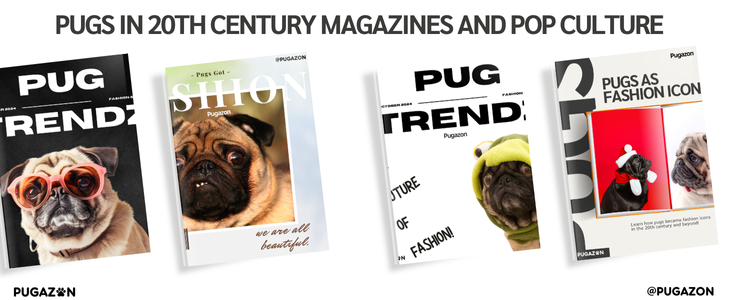
Pugs in Magazines: Cover Stars of the 20th Century
The 20th century also saw pugs featured regularly in more fashion and lifestyle magazines. Publications often showcased pugs on their covers and in fashion spreads, where they often appeared alongside celebrities and models. Pugs’ expressive faces and charming personalities translated beautifully into the glossy pages of high-end magazines, reinforcing their association with luxury and status.
In particular, pugs were frequently featured in articles about pet ownership among the elite, highlighting their status as the breed of choice for celebrities and high-society figures. Pug-centered photo shoots became a common trend, with the breed often styled in glamorous settings, further cementing their role as pop culture icons.
Pugs in TV Series - Cameos Across Blockbuster Shows
Pugs have made their mark not just in movies and magazines but also on some of the most iconic television shows of all time, showcasing their unique charm to millions of viewers. These lovable dogs have been featured in hit series like Friends and The King of Queens, reinforcing their status as fan-favorite pets across generations.
In the beloved sitcom Friends, pugs played a central role in a memorable storyline. In Season 4, Episode 11, titled “The One with Phoebe’s Uterus,” Phoebe’s mother gifts her a pug as part of her journey in exploring motherhood and the responsibilities that come with it. This storyline not only provided comic relief but also symbolized the bond between humans and pets. The pug’s expressive demeanor fit perfectly with the lighthearted yet meaningful nature of the show, adding to the episode’s charm.
Another popular series that featured pugs was The King of Queens, a sitcom known for its relatable humor and quirky characters. In several episodes, a pug named Allan, who is owned by Spence, make hilarious cameos directly engaging in the story line and with the characters. The breed’s playful antics and distinctive look added to the show’s comedic dynamics, making the pug a memorable fan part of the series.
Pugs’ presence in these top-rated shows not only highlighted their appeal as lovable companions but also reflected their cultural impact. By appearing in high-grossing TV series, pugs secured their place as iconic television pets, bringing joy to audiences and reinforcing their status as symbols of both humor and heart.
Pugs in Advertising: An Irresistible Sales Tool
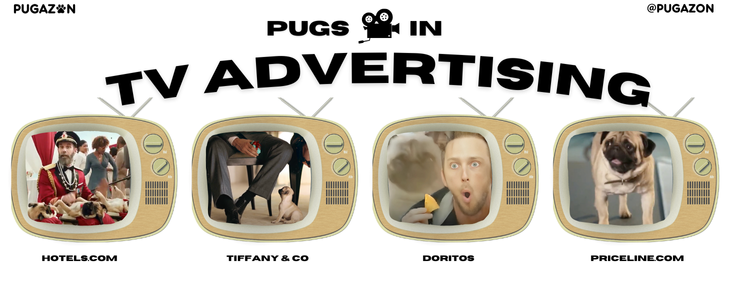
Pugs have become favorites in the advertising world, captivating audiences with their distinct charm and expressive faces. Their unique look—marked by big eyes, wrinkled faces, and a compact stature—makes them ideal for creating memorable campaigns across various industries. From comedic snack ads to high-end luxury promotions, pugs have established themselves as versatile stars of advertising.
A standout example is the Doritos “Pug Attack” Super Bowl Commercial (2011), where a pug humorously crashes through a door to grab a bag of Doritos. This fan-favorite ad showcased the breed’s playful spirit and universal appeal, making it one of the most memorable Super Bowl commercials.
In a lighthearted Hotels.com commercial titled “Dancers! Goats! Pugs!”, pugs added unexpected humor, perfectly matching the brand’s adventurous tone. The ad’s whimsical nature aligned seamlessly with the breed’s lovable antics, making it a key part of the campaign’s charm.
Priceline also featured a pug in a treadmill-themed ad, highlighting the breed’s endearing efforts to keep pace. The commercial, which starred Kaley Cuoco from The Big Bang Theory, added a fun twist. Cuoco’s well-known love for animals, particularly pugs, added an extra layer of relatability and star power to the campaign, enhancing its appeal among viewers.
Even luxury brands like Tiffany’s have tapped into the pug’s appeal. In one of its holiday campaigns, a pug was featured prominently to evoke warmth, elegance, and the festive spirit. The pug’s dignified yet charming presence perfectly complemented the brand’s timeless allure, symbolizing the joy of gifting during the holiday season.
From snack commercials to holiday campaigns, pugs have proven to be versatile and effective advertising icons. Their ability to inspire both laughter and affection makes them a powerful sales tool, contributing to campaigns that leave lasting impressions.
The Rise of Pug Collectibles and Memorabilia in the 20th Century
The pug’s cultural influence extended beyond their roles in cinema, fashion, and advertising. As their popularity soared throughout the 20th century, so too did the market for pug-themed collectibles and memorabilia. From porcelain figurines to pug-inspired artwork, the breed became a favorite subject for collectors, creating a booming market that reflected the pug’s widespread appeal.
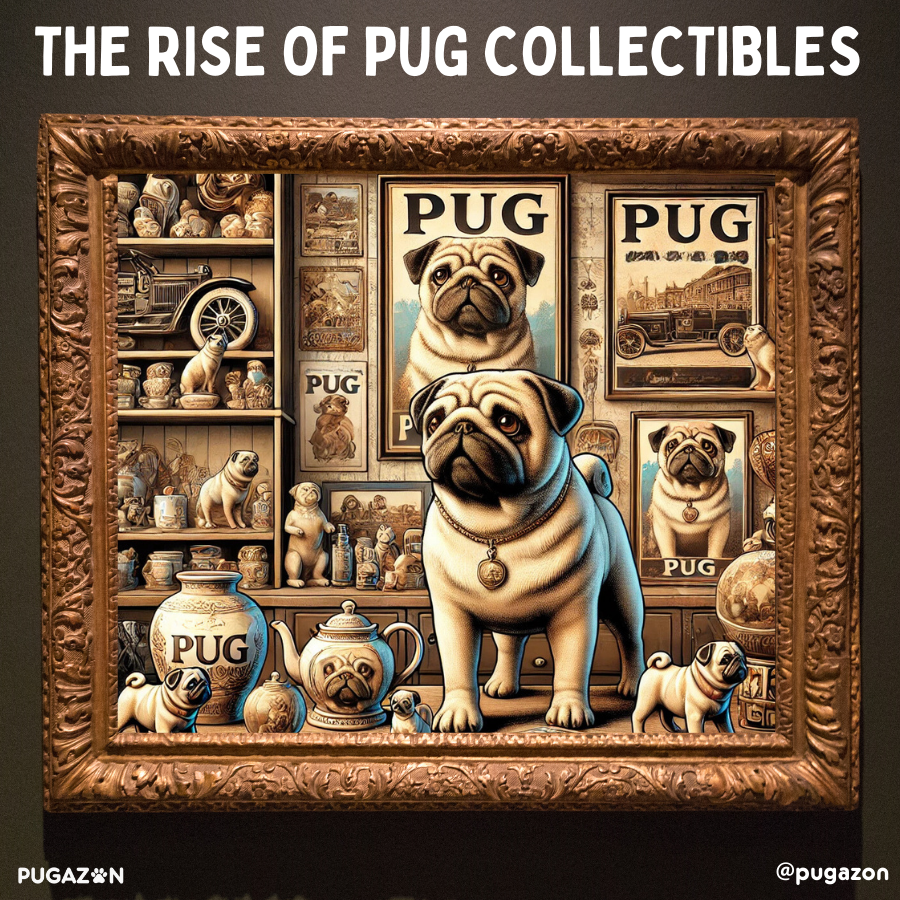
The Golden Age of Pug Figurines
In the early 20th century, pug figurines began to capture the attention of collectors, particularly in Europe. These delicate porcelain and ceramic pieces often featured pugs in elegant poses, symbolizing the breed’s longstanding association with luxury and refinement. German porcelain makers, such as Meissen, were known for their detailed and finely crafted pug figurines, which were prized by collectors for their intricate designs and artistic value. These pieces represented the elegance and sophistication that pugs embodied, making them desirable among collectors who appreciated the breed’s noble aura.
As pug collectibles gained popularity, their production expanded to cater to a wider audience. Porcelain and ceramic figurines, along with other memorabilia like decorative plates and vintage postcards, became more accessible over time. While luxury brands like Meissen remained prominent, other manufacturers began producing more affordable pug-themed items, making them available to middle-class consumers. This shift helped pug-themed collectibles reach a broader audience, particularly as the appeal of pugs grew across different social classes and geographic regions.
Pug Memorabilia in Advertising and Pop Culture
The rise of pug-related advertising in the mid-20th century also contributed to a surge in pug memorabilia. Collectors eagerly sought out items like pug-themed posters, promotional materials from pug-related films, and even toys based on famous pug characters from cinema and television. Frank the Pug from Men in Black became an especially popular subject, with toys, action figures, and promotional merchandise featuring his likeness flying off the shelves.
Additionally, pug-themed artwork, including lithographs, paintings, and even comic strips, became sought-after items among collectors. These pieces reflected the pug’s continued status as a pop culture icon, showcasing their role not only as pets but also as symbols of affection, humor, and style.
The Enduring Legacy of Pugs in 20th Century Culture
Pugs in 20th century culture were not just fashionable pets; they became symbols of elegance, loyalty, and charm across various forms of media. From their beginnings in royal courts to their roles in Hollywood and advertising, pugs in 20th century culture evolved into beloved cultural icons. Their pug cultural influence stretched across art, film, fashion, and even collectibles, making them one of the most popular breeds of the time. This legacy of pugs in 20th century culturecontinues to this day, demonstrating the breed’s deep emotional and cultural connection with the public.
Pugs as Cultural Icons in the 20th Century
Throughout the 20th century, pugs established themselves as cultural icons. Their distinctive wrinkled faces, expressive eyes, and charming personalities made them a favorite subject in various forms of media. Whether depicted in aristocratic paintings or featured alongside celebrities in magazines, pugs in 20th century culture became symbols of elegance and warmth. This status was not limited to the wealthy—pugs charmed everyday families, solidifying their place in pug pop culture.
The pug cultural influence grew throughout the century, thanks in large part to their appearances in both highbrow and popular culture. From starring roles in films and TV ads to appearing in comic strips and children’s books, pugs were everywhere. Their physical appearance and playful nature made them perfect for depicting a variety of emotions, ranging from humor to loyalty. This ability to connect with diverse audiences helped pugs in pop culture remain relevant for decades.
The Influence of Pugs in Modern Culture
While pugs in 20th century culture laid the foundation for their cultural significance, their influence didn’t stop there. Pugs in modern culture continue to be prominent, with their presence dominating social media platforms like Instagram, TikTok, and YouTube. The rise of pug influencers, many of whom boast millions of followers, shows how pugs in pop culture have kept up with modern trends. Their appeal has extended to the internet age, where pugs are celebrated for their cuteness, humor, and personality.
The pug legacy is also reflected in the surge of pug-themed products and events. From pug meetups to merchandise, pug cultural influence continues to grow. Designers and brands still use pug imagery to evoke feelings of warmth and humor. The breed’s ability to resonate with such a broad audience ensures that their influence in modern culture will continue for years to come.
The Emotional Connection with Pugs
A large part of pug cultural influence comes from the deep emotional bond between pugs and their owners. Throughout pugs in 20th century culture, this connection was apparent in how they were portrayed in media as loving, loyal companions. This emotional bond remains strong today, as pugs continue to offer affection and comfort to their families. The sense of community that exists among pug lovers is further evidence of the pug legacy and their enduring presence in popular culture.
In modern times, pug owners often organize pug-centered events, such as pug parades and meetups. These gatherings celebrate the breed’s friendly nature and highlight their special place in both modern culture and personal lives. The emotional connection people feel with pugs has ensured that the breed’s legacy remains intact, keeping pugs in pop culture for future generations to cherish.
Debunking Common Misconceptions About Pugs in Popular Culture
Despite their long-standing presence in media, pugs in popular culture are often misunderstood. Several pug misconceptions and pug myths have emerged over the years, which can obscure the breed’s true nature. In this section, we’ll debunk some of the most common pug symbolism myths and clarify what life with a pug is really like.
One persistent pug misconception is that pugs are inherently lazy. This pug myth likely arises from their compact size and somewhat relaxed demeanor, but the truth is far from that. While pugs do enjoy lounging and cuddling, they are also energetic, playful, and love being active with their owners. In pugs in popular culture, they are often depicted as couch potatoes, but anyone who has owned a pug knows they enjoy walks, playtime and especially their zoomies! These are little bursts of energy which sees pugs transform into mini speed racers that drift around home and corners bum first with surprising quickness & agility.
Myth 1 - Pugs are Lazy
Another pug misconception is that they are overly high-maintenance. While pugs do have certain grooming needs, such as cleaning their facial wrinkles and regular coat maintenance, they are not as difficult to care for as some might think. Pug symbolism myths often exaggerate the level of care required, but with proper grooming routines, they are manageable and make excellent pets for both first-time and experienced dog owners. The affectionate and easy-going nature of pugs makes them adaptable to many different living situations, dispelling the idea that they require an excessive amount of attention. This pug myth is often a barrier to potential pug owners, but the reality is that they are loving and fairly easy to care for when their needs are understood.
Myth 2: Pugs Are High-Maintenance Pets
A frequent pug misconception involves their health. It’s true that pugs are prone to certain health conditions, such as breathing issues due to their flat faces, but not every pug will experience severe problems. Responsible breeding and good health care can minimize these risks. Advances in veterinary medicine have also improved care for pugs, further reducing the impact of common health conditions. By ensuring that pugs receive regular vet checkups, a healthy diet, and appropriate exercise, many of the concerns surrounding pug symbolism myths about their health can be alleviated. It’s important to recognize that not all pugs will experience major health problems, and many live long, healthy lives with proper care.
Myth 3: Pugs Have Serious Health Issues
Another pug symbolism myth is that pugs are kept only as fashion accessories. This misconception likely stems from their association with celebrities and their appearance in media. While pugs have been featured alongside famous figures in pugs in popular culture, they are much more than just a trendy pet. Pugs are cherished for their loyal, affectionate personalities, and the bond between them and their owners is deeply emotional. This pug myth ignores the fact that pugs have been beloved companions for centuries. Their presence in pug pop culturereflects their enduring role as loving pets, not just as status symbols. By debunking this myth, we can better understand the deep connection pug owners share with their pets, which goes far beyond any fleeting fashion trends.
Myth 4: Pugs Are Just Fashionable Accessories
FAQs About Pugs in 20th Century Art & Culture
Pugs in 20th century art became frequent subjects due to their distinct look and their historical associations with royalty and the elite. Throughout the 20th century, pugs were featured in paintings, decorative arts, and even commercial art. Their role in pug culture FAQs highlights how artists used pugs to symbolize loyalty, elegance, and charm.
While artists like William Hogarth and Francisco Goya are well-known for earlier depictions of pugs, pugs in 20th century art were also featured by lesser-known artists in decorative pieces, such as figurines and porcelain art. These items became highly collectible, as pugs in art FAQs often discuss their status as both beloved pets and symbols of high society.
The popularity of pugs in 20th century culture can be traced to their presence in both the aristocracy and popular media. Pugs’ affectionate nature and their ability to adapt to various environments made them beloved by many different types of people. Their frequent appearances in movies, advertisements, and fashion further solidified their place in pug culture.
Pugs in 20th century art were not limited to traditional fine art—they also became iconic figures in advertising. Brands used pugs to convey warmth, loyalty, and humor. Vodafone’s famous use of pugs in their commercials is just one example of how the breed was employed to create emotional connections with consumers. These appearances helped further establish the pug legacy in mainstream culture.


